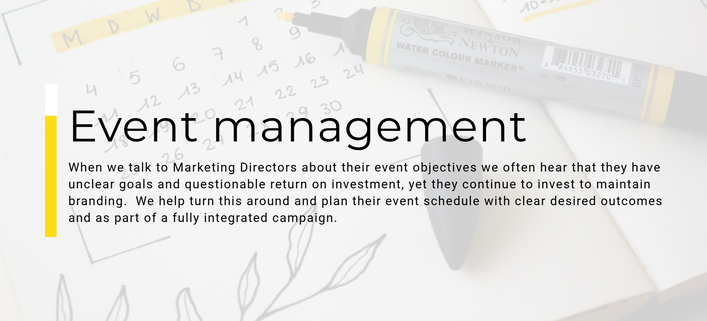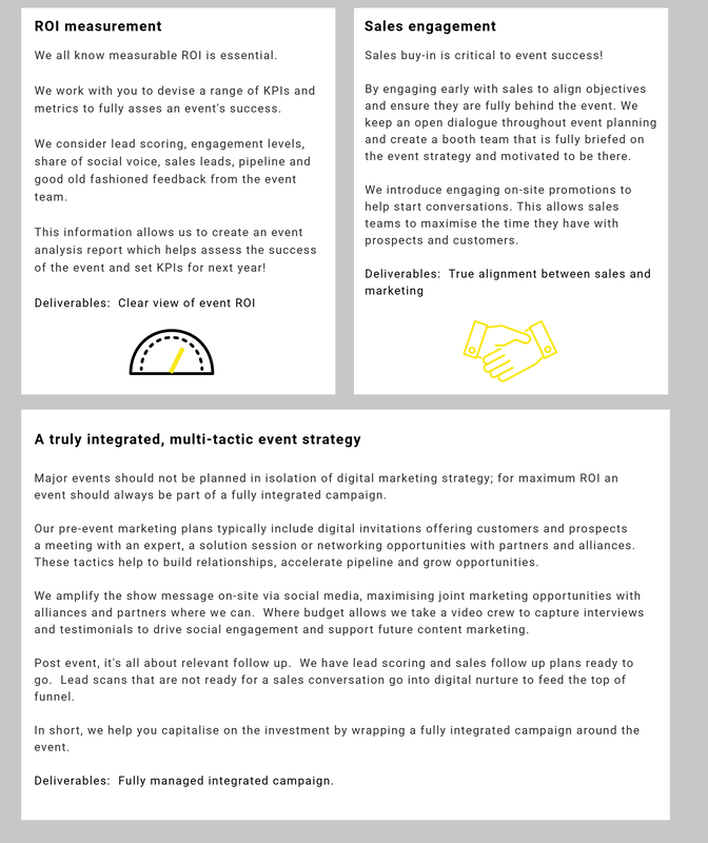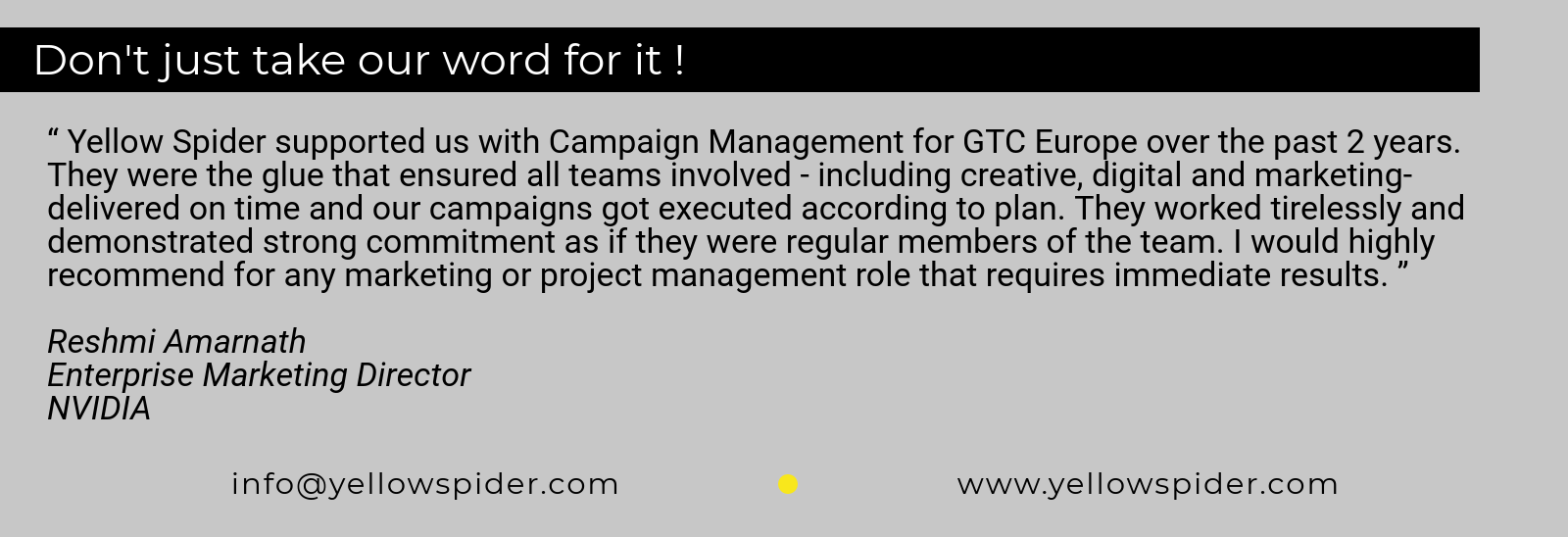The Collaborative Advantage I’ve been in the business long enough to know that a channel partnership is much more than a transactional relationship; it’s a strategic alliance. When IT vendors and their partners work collaboratively, they combine their strengths to create a formidable force. Partners bring a wealth of valuable local knowledge, customer relationships, and market insights that vendors often lack. A collaborative approach ensures that solutions are not only designed to meet market demands but they’re also effectively delivered and supported. Working closely with partners enables vendors to tailor their offerings to specific market needs, providing a more customised and relevant solution to end customers. Mutual Business Benefits All successful channel partnership are built on mutual benefit and ensuring both parties ‘get what they want’. Put simply, partners expand a vendors reach and market presence without the need for significant additional resources and partners gain access to cutting-edge technologies and solutions that can enhance their own offerings and differentiate them in a busy marketplace. This symbiotic relationship drives growth for both parties. Vendors can focus on innovation and product development, confident that their partners will handle distribution, sales, and support effectively. Meanwhile, partners can leverage the vendor’s technology to enhance their value proposition to customers, leading to increased sales and profitability. This mutual success creates a valuable cycle of growth and innovation. Partners; the Force Multipliers Partners are true force multipliers for IT vendors. They enable vendors to scale rapidly and effectively without the overhead costs associated with building and maintaining large in-house teams. Partners bring their own expertise, resources, and customer bases, amplifying the vendor's reach and impact. Partners also play a crucial role in driving innovation. They are the ‘voice’ from the field providing feedback and insights, helping vendors to refine and improve their products. This real-time feedback loop is invaluable in an industry where staying ahead of the curve is vital. Scaling and Growth The answer to scaling and growth lies in leveraging the strengths of strategic partners. IT vendors can scale their operations significantly by building a robust partner ecosystem. This approach allows vendors to enter new markets quickly, adapt to changing customer needs, and stay competitive in a crowded marketplace. A strong channel strategy helps vendors manage risks better. By diversifying their routes to market and relying on a network of trusted partners, vendors can mitigate the impact of market fluctuations and economic uncertainties. This resilience is crucial for long-term growth and stability. For IT vendors aiming to achieve sustainable growth and success, investing in a strategic channel partnership is not optional but essential. Partners provide the collaborative advantage, mutual business benefits, and force multiplication necessary for scaling and growth. Yellow Spider have worked closely with IT vendors and their partners for over a decade, helping them to unlock new opportunities, drive innovation, and build a resilient and thriving business.
0 Comments
Why do words matter?
Words are powerful. They’re used to unite people, pull them apart, to drive people to action; in essence, they’re what sets humankind apart from our other, less sophisticated relations. Furthermore, our unique methods of communication (our language, tone, sense of humour and so on) are what brings our personalities to life. But what does this mean in the corporate market? A whole lot, actually. The business world has been in a tough spot for some time. Older companies may remember the global recession of the early 2000s, and everyone will have been more recently challenged by the pandemic. While this economic landscape sadly forced the closure of many good businesses, those remaining have inherited a heavy load - intensified competition, price increases and escalated consumer expectations. In this new commercial world, where competition is fierce, how can organisations set themselves apart from the competition? Easy: words. Your online presence – your website, social media accounts, blogs, brochures and more are what make you you. When you use the right words to powerfully communicate your company messaging, your brand personality shines through. It’s this that resonates with audiences and entices action. Because no matter how far down the business to business tunnel you find yourself, people are still buying from people. But what does a copywriter do that I can’t do myself? That’s a good question. Here are a few good answers:
At the end of the day, all businesses, no matter the industry, are selling something – whether a product or a service and are therefore reliant on a receptive audience to say, “yes”. The way you pitch your organisation, the consistency of your messaging, your online visibility and the personality you’re able to bring to your audience all have the power to make or break your brand. Hiring a professional dramatically increases your chances of your audience saying “yes” more often than them saying “no”. Here’s the best bit: we can do it all for you! From social posts to emails, brochures to blogs: Yellow Spider is the gift that just keeps on giving.
Focus on the output not the process MDF isn’t always treated with the importance it deserves and in some cases the process takes over from the output. What I mean is that we often see a lot of time being spent on following the process and complying with each step but then see little focus on the important part which is ‘what difference has this made? What revenue has this driven?’ It’s easy for MDF to simply become a process and for the reporting a tick box exercise; something that needs to be done to make a claim but don’t lose sight of the actual impact an activity is making. As a vendor you want reporting that reflects reality and allows you to track the true ROI, not just a list of spurious numbers. Report on what’s important Being able to measure an activity is one thing but being able to see if it actually works is something else. People use the terms POE and POP interchangeably, but they are two very different things. POE is something that demonstrates an activity has taken place, this is arguably a box ticking activity. It’s the ‘here’s a list of the 100 people who attended our webinar’ very rarely is there a £ value attributed to the metric. You can’t measure ROI from POE. POP on the other hand is reporting to demonstrate how well the activity performed and the impact on revenue might not be released for 6,8 or 12 months after execution. We have a client who is running an MDF funded content syndication campaign with a partner. The vendor doesn’t want to know about the 500 raw leads the campaign generates, they want to know the figure of qualified leads that comes as a result of the prospecting by the tele marketing team. And for that reason…. Deal registration Has become even more important than ever as a method of tracking the impact of an activity. Another Yellow Spider client requests POE immediately after the activity is executed but a criteria of claiming their MDF is that the partner must deal reg all leads generated as a result of ongoing nurture. The vendor wants the partner to take responsibility for lead nurture and to own the potential pipeline it represents. They want to know what revenue the activity has driven, that’s how they measure ROI. Some activities are easier to measure than others But that doesn’t mean you should neglect the difficult ones, you just need to be smarter at how you measure and report. We believe it’s about guiding people to what good looks like and that depends on the activity type. If you take content syndication as an example; if this is something you offer as a service on your marketing automation platform then it’s easy to execute and measure. If you don’t then the partner will use MDF to fund an activity with a third party, that activity is then out of your control and not as easy for you to measure but it doesn’t mean you shouldn’t do it. Be clear on what good looks like. All partners are different and a successful campaign varies depending on the activity type and what you’re aiming to achieve. Have simple guidelines, set expectations and be clear on what you are measuring. Yellow Spider has a long history in developing and managing MDF and deal registration programs for vendors. If you would like more information on how we can help your program run more efficiently, please contact us.
 Email marketing has evolved significantly over the last few years. What started as more of a megaphone for your message has now become a smarter and personalized way to talk directly to your contacts, and a way to get insights into their interest in return. Email is now one of - if not the - most effective ways to interact with your audience. But with so many platforms and features out there, it can be difficult to pick the right tool to send your messages and engage with recipients. Here are the top features and functionality you should be looking for when selecting an email marketing platform. Meaningful Metrics Data rules when it comes to managing your marketing tactics, and knowing who opens and reads your emails is essential. Beyond the standard metrics like opens and clicks, look for a platform that gives you more insight into Who, What, Where, Why, and How your emails are being viewed. Look for a tool that tracks what gets clicks and what content is getting the most views. Some platforms can track the location where the emails are viewed - helping you know the best time zones to send or language to localize your messages to in the future. You will get varying clicks depending on the time of day you send your email and you may be able to track if the email was opened on a laptop versus a mobile device. Having this information gives you insights into your contact’s behavior and how they interact with your messages which is invaluable when planning future campaigns. Customizable Campaigns Pre-built campaigns and templates are great but if you can’t customize your messaging options, skip that tool. Look for features that let you brand and personalize your messages. Over half of emails are opened on mobile devices compared to desktop, so you need to consider being able to design your messages for mobile viewing. Let your audience know who the message is from by making your emails unique. Beyond the design flexibility, you want to use a platform with send and viewing options as well. Can you schedule your messages based on your recipient’s time zone? Will it score your leads based on their engagement, and automate nurturing? Does it allow for A/B testing? Can it adjust to different country’s data and privacy rules? Although these features usually come at a price, a robust set of options will result in a more successful campaign and ultimately a better return. Ease of Use All the bells and whistles can’t save a terrible interface. If setting up a campaign leaves you frustrated, it’s time to look for a different tool. Find a platform that gives you intuitive steps through a process, tooltips, or helpful tours/guides to their features and setting options. It’s not just aesthetics; get something that is practical and efficient. Consider it a plus if they have a knowledge bank with articles and tips to help you stay on top of trends and best practices. Reputable and Reliable You may think it’s obvious, but finding a marketing tool with good reviews is best. It’s very tempting to save costs and go for the “affordable” option however, this can end up costing you more in the long run. Beware of tools that advertise low costs for high-volume email sends, these often end up with terrible delivery rates, blacklisted IP addresses, or go straight to junk. Check within your marketing community to see what others in the field are already using and what they like about it. Do your research before you sign up and read reviews from other users. It’s also a good idea to request a free trial before committing to a platform. When it comes to email marketing you need to consider what your priorities are and what the requirements of your organization are. From first impressions to loyal customers, your email messages will speak not only your message but will represent your brand and business too so find a tool that will elevate that message and build your business value.
In this article Sophie Griffis, Project Director at Yellow Spider, discusses the 5 reasons why working with an agency is a good solution to support your business growth. 1. Expertise Agencies have a pool of resource that have been carefully selected for their skills and expertise in a specific area. That means the person who is allocated to manage your project will not only be able to do the job, but they are likely to be an expert in it! This is a good fit with project work which, by nature, is often centered around one type of activity (i.e. events, email campaign support, partner enablement etc.). You get an expert, not just a ‘doer’. 2. Cost This obviously depends on the support you need and for how long but generally speaking, when you work with an outsourced marketing agency the overall cost burden is reduced. You avoid having to pay recruitment fees, holiday pay, sick leave, company benefits and office space and equipment costs. 3. Extended team Unlike freelancers, individuals who work for an agency do not work alone. They are part of a team and have access to a wider pool of support that they can call on as and when required for specific skills. This wealth of knowledge and experience is an invaluable resource for advice and best practice. Having the support of a team means you always have cover during times of absence, and it gives you the ability to flex resource up during busy periods to meet seasonal fluctuations in workload. 4. Commitment Commitment happens to be one of our core values at Yellow Spider Ltd. We are committed to providing a service that exceeds our customers expectation. Our style is effective, open communication and transparency at all times. We get the job done, we work to tight deadlines and as a by-product aim to leave best practice behind wherever we go! 5. Reactive We’ve all had times when we’ve needed additional support on a project or task, but recruitment is not an option because it would take too long. A marketing agency is ready to jump headfirst into a project in an instant. They require minimal training (they’ve done it all before) and zero onboarding. An agency is able to react quickly, whatever support you need and will have someone with the right skills ready to help you immediately. Yellow Spider is a marketing services agency. We offer a 100% outsourced marketing function, fitting seamlessly into your existing team to bridge skills, fill gaps in headcount or cover leave of absence. To find out how we can help your business contact us today.  MEET THE AUTHOR: SOPHIE GRIFFIS Expert in managing channel partner relationships focused on generating revenue, virtual campaign management, development and management of online partner tools and process improvement.  How would you define success in your Field Marketing role? This question was posed to me not too long ago, and faster than expected my answer was: I would base it on the quality of my collaboration with sales. Quality and collaboration… let’s come back to that in a moment. As I made that statement I felt that the expected answer was more in line with “achieve 110% of pipeline target” or “run focused webinars across key verticals”. Yes, that is the job but success, in my opinion, comes from doing the job in a certain way. Secondly, I am not sure why my response surprised me so much, as I have experienced this really working (and not), and this is where the part about quality and collaboration comes in. It’s not about always saying “yes” or even being mentioned in the internal announcements about closed deals (!) but about taking the time to educate and be educated and make sure you focus on the same end goals, in every day business, beyond the quarterly or annual business plan and QBRs. As our world and our work has changed over the last year, the power of high quality collaboration between marketing and sales has only increased, and I can see three key areas worth some extra focus:
 MEET THE AUTHOR: ANNA PHILIPPEN Anna has international experience from marketing, alliances and general business management. A native Swede and fluent in German, she is now settled back into Swedish life after more than a decade in the UK, South Africa and Germany. Anna loves to take an idea and run with it, make it happen with a team that cares and exceed expectations (a little competitive, are we?). She has held positions at RSA, Dimension Data and Symantec before working with numerous other IT companies on a project basis.  We love data at Yellow Spider, mainly because it provides so much insight that we use to improve our clients marketing outreach. During these times of reflection we are supporting a number vendors who are revisiting and analysing their data to make sure it is providing them with maximum value. Our main focus is to highlight opportunities for growth which are often overlooked or missed. We have developed a tool that combines data and intelligence gathered through the sales and marketing process to identify specific behaviours and buying preferences. This allows us to create groups of customers with similar characteristics resulting in effective segmentation and identify clearly defined groups of opportunities:
This method of segmentation helps to define marketing activities, go to market strategies and messaging for targeted nurture campaigns aimed at driving specific outcomes or responses. It’s powerful insight and is particularly relevant to organisations selling through a two-tier model. Information gathered can be used to strengthen channel relationships and build more effective (and mutually lucrative) engagements through a programmatic approach. The benefits of taking a fresh look at your data are clear and by introducing a regular cadence of analysis patterns start to emerge. Once the framework is in place it’s easy to run the analysis on a quarterly basis as a temperature check or to measure the effectiveness of sales and marketing campaigns. To find out how we can help you maximise your data and optimise your channel engagements please get in touch.  We’ve seen lots of events being cancelled over the past couple of months some with the promise of “going digital” as an alternative to the live event itself. This got us thinking at Yellow Spider about what “going digital” actually means. It’s hard to imagine a time when one can simply recreate the face to face experience of a live event with a digital substitute, no matter how advanced it is. There are some great platforms out there that have rocketed in popularity over the last few weeks that aim to recreate the human experience. They provide a virtual event, presenting content in a compelling way, offer a two-way question and answer facility, some even allow you to request giveaways. A brilliant solution in the absence of a ‘real’ event but how do you gauge an individual’s reaction to a statement or message? How can you see what they are responding to or understand what it is they want to gain by engaging with you? At Yellow Spider “going digital” means so much more. There is already an abundance of digital content available in our organisations today so going digital for us means looking at the end to end digital journey, leveraging existing platforms, assets and content to identify, segment and nurture opportunities at all stages of the sales pipeline. We start with leads and opportunities that already exist. What are these people doing instead of attending trade events? We look at how we can leverage all digital platforms to understand more about the audience’s characteristics, what and how they consume content and how they want to engage. By understanding how content is consumed we evolve marketing tactics using multi touch digital campaigns to drive awareness and action and gain attention. We look at the complete landscape and create digital content aimed at specific market verticals then formulate campaigns that move those ‘warm’ opportunities through the sales pipeline. We use digital platforms to gauge interest levels and response rates then feed this information into a lead scoring process. This method of scoring allows us to measure engagement in a campaign and track behaviours and demographics to get a better understanding of the prospect's company and situation. This helps to define the lead follow up strategy and highlights who needs immediate follow up, who needs to be nurtured and who should be discounted. That work also feeds really well into a virtual event strategy for a more targeted and tailored approach based on interest indicators. And, that is where we believe a virtual event can really make a immediate impact on leads and pipeline generation, much like the physical events that are now on pause. In summary it doesn’t need to just be all about virtual events, there is so much more digital marketing activity that can provide real, measurable results (and generate pipeline). Contact us today to find out how we can help your journey to “going digital”.
In this time of uncertainty, let us take you on a journey through the 7 wonders of the data world. 1. Take a holistic view of your data landscape It might sound obvious, but the first step to a future proofing your data landscape is to ensure it is healthy, clean and doesn't lack obvious information. Review your CRM and data management systems to highlight what information is a ‘must have’ then run a report. You could be surprised how many fields are empty, wrongly populated or not following a standardised naming conventions. Look at those big elements first; the devil is not always in the detail! New 7 Wonders Fact : The statue is located at the peak of the 700-metre (2,300 ft) Corcovado mountain in the Tijuca Forest National Park overlooking the city of Rio de Janeiro. It has been hit by lightning numerous times, once just before the World Cup in 2014, damaging the back of the head and tip of a finger which both had to be repaired quickly before the games began. 2. Structure your data as a blueprint for the future Use your data wisely. Building the right segmentation will enable you to personalise your approach for each of your target groups and build specific buying group personas. Then, when it comes to positioning, you’ll be able to create content and messaging that you know resonates with those specific personas for maximum impact. It creates the blueprint for all of your future marketing campaigns. New 7 Wonders Fact : Even after 2,000 years or so, the Colosseum still influences the construction of modern-day amphitheatres. 3. Discover the hidden gems in your data Sometimes, the most obvious data targets are not the most lucrative; never forget to study historical data! Analysis of past buying patterns helps you look at your data in a different way and highlight opportunity clusters that perhaps have been over looked. Over laying sales data and alignment with your competitors will uncover hidden gems that will drive new campaigns aimed at regaining your ‘share of wallet’. New 7 Wonders Fact : Machu Picchu was built by the Incas around 1450, but abandoned it a century later . It was then only known locally until Yale Professor Hiram Bingham re-discovered the site in 1911. 4. A step by step approach to managing data Here are a few simple steps to successful data management:
The El Castillo temple in Chichen Itza counts 365 steps - one for each day of the year. 5. Use data wisely to feed your pipeline Use past learnings to build a healthy pipeline. Leverage data on customer buying patterns and preferences to enhance your outreach strategies be that digital campaigns, appointment setting or audience acquisition. Be smart with your data to create your own lead generation oasis! New 7 Wonders Fact: Petra is half-built, half-carved into the rock. It includes an ingenious water management system with tunnels, diversion dams, cisterns and reservoirs which controlled and conserved seasonal rains - creating an oasis in an essentially arid area during the Nabataean, Roman and Byzantine periods. 6. Build affection for your data Valuable data is a labour of love and requires team work. Investing time with your team to share the importance of data will help you in the long run. Understanding and buying into what needs to be done leads to effective maintenance and will empower your team member to leverage the data in an accurate way. Win win! New 7 Wonders Fact: It took the efforts of 22,000 workers, painters, embroidery artists and stonecutters to shape the Taj Mahal, using materials from all over India, Asia and beyond. 7. Data for the long road  Maintaining, curating and caring for data is essential to ensure it remains accessible, relevant and fit for purpose. Identify a ‘champion’ who owns and reviews all of your company data on a regular basis to ensure its robust and useable for years to come. New 7 Wonders Fact: The collection of fortifications known as the Great Wall of China has historically had a number of different names in both Chinese and English - including "Ten-Thousand Mile Long Wall", "the outer fortresses", "the border wall(s)", "the Purple Frontier" or "the Earth Dragon". |














